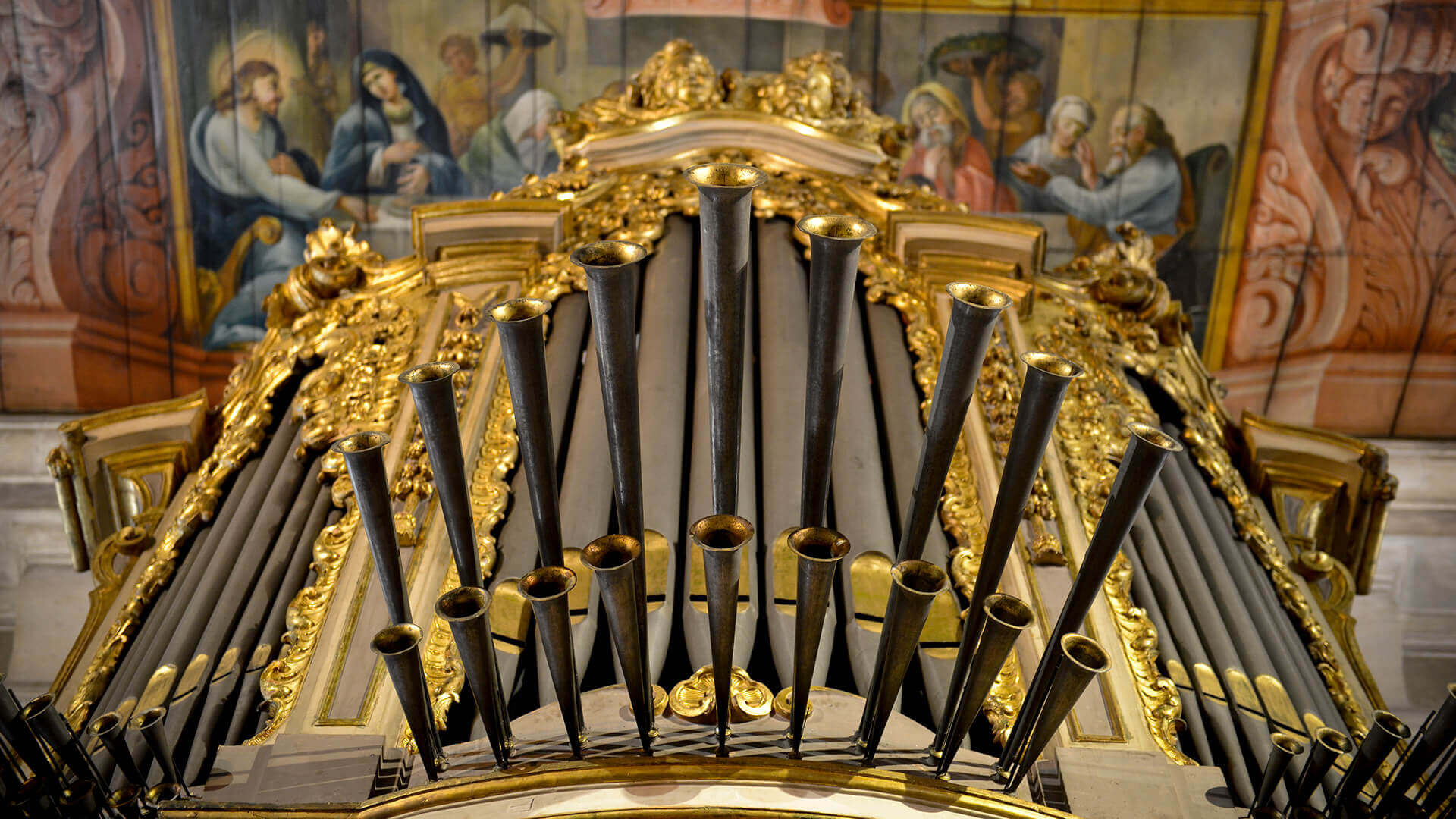MUSEUM / CHURCH
The Museum of São Roque was one of the first art museums to be created in Portugal.
It opened to the public on 11 January 1905, with the name “Museu do Thesouro da Capela de São João Baptista” (Treasure Museum of the Chapel of St. John the Baptist), in evocation of the important collection of Italian art that was at the origin of its creation.
It occupies the central area of the building of the former professed house of the Society of Jesus, the residential space adjacent to one of the most important works of Portuguese religious architecture and one of the three oldest churches of the Society of Jesus in Portugal: the Church of São Roque, inaugurated in 1573. It is a monument classified as national heritage, which maintains its integrity with regard to the architectural design, integrated and movable heritage.
In 1768, after the expulsion of the Jesuits from Portugal, the Church and the old Professed House of São Roque were donated with all its assets to Santa Casa da Misericórdia of Lisbon, which has preserved them until the present day.
The set brings together a collection that stands out for the quality and diversity of its artistic collections, offering visitors an incursion through the most important moments of Portuguese history and art history.
what you can see on this page
building and organisation of the museum
The exhibition circuit is organised into five nuclei, related to the history and life of the site and the former Professed House.

Nucleus 1. Shrine of São Roque
Dedicated to the shrine of São Roque, which has since been demolished to make way for the Church of São Roque, some artistic testimonies from that hermitage are on display here, such as the set of boards painted in oil with the life cycle of this saint, which once formed part of the respective altarpiece.
Nucleus 2. Society of Jesus
It is dedicated to the implantation of the Society of Jesus in Portugal in 1540 and to the programme of aesthetic renewal imposed by the new rules of the Counter-Reformation liturgy.
Nucleus 3. Asian Art
It gathers a set of objects originating from the Near East, India, China and Japan produced for trade and export. This collection reflects the encounter of cultures as part of the Portuguese expansion and the missionary action of the Society of Jesus in Asia during the Modern period under the Portuguese Patronage of the East.
Nucleus 4. Chapel of St. John the Baptist
It contains a remarkable set of 18th century Italian works of goldsmithery, vestments and books intended for the liturgical practices celebrated in that chapel, located on the left side of the Church of São Roque.
Nucleus 5. Misericórdia of Lisbon
It aims to provide information on the history of the institution, which was founded in 1498 with the purpose of mitigating the serious assistance and health problems existing in Lisbon.
the church
The Church of São Roque has only one nave, a shallow chancel and eight intercommunicating side chapels. This model is traditionally called “hall-church” (Igreja-salão).
In the upper part is a group of large-sized paintings depicting episodes from the life of St. Ignatius of Loyola, the founder of the Society of Jesus. These paintings are the work of the artist Domingos da Cunha, popularly known as “the Little Goat”.
This grandiose church has a plain architectural style and was built in accordance with the liturgical recommendations of the Council of Trent (1545-1563). It is therefore representative of the process for the renewal of the Catholic faith that resulted from the meeting of this council.
church chapels
sacristy



Built at the beginning of the 17th century, it is covered with three cycles of oil paintings on canvas:
The first, at the level of the back of the sacristy chest of drawers, was executed by André Reinoso (ca. 1590-after 1650) in 1619 and represents episodes from the life of St. Francis Xavier, including some miracles performed by the Jesuit during his missionary journeys in Asia.
The second, attributed to André Gonçalves (1685-1754) and painted in the 18th century, includes paintings dedicated to the “Passion of Christ”, interspersed with allegorical paintings with biblical phrases.
The third and last entry shows paintings of the “Life of St. Ignatius of Loyola”, the founder of the Society of Jesus, attributed to the painter Domingos da Cunha, “o Cabrinha” (ca. 1598-1644).
organ


Built in 1784, it was one of the first instruments to leave the workshop of the famous organ builder, António Xavier Machado e Cerveira (1756-1828). It was originally located in the church of the Convent of São Pedro de Alcântara, having been transferred to the upper choir of the Church of São Roque in 1844.
ceiling

This is the only remaining example in Lisbon of the great painted ceilings from the mannerist period. It was produced between 1587 and 1589 by the royal painter Francisco Venegas, of Spanish origin.
Resorting to the trompe-l’oeil technique, the artist painted this flat wooden ceiling with three domes drawn in perspective and separated by four depressed arches, together with the painting of grotesques. Later, at the beginning of the seventeenth century, the painter Amaro do Vale introduced the great central medallion into the composition, depicting the “Exaltation of the Holy Cross”, while the four mystical meals of Christ are represented in the strips along the sides.














